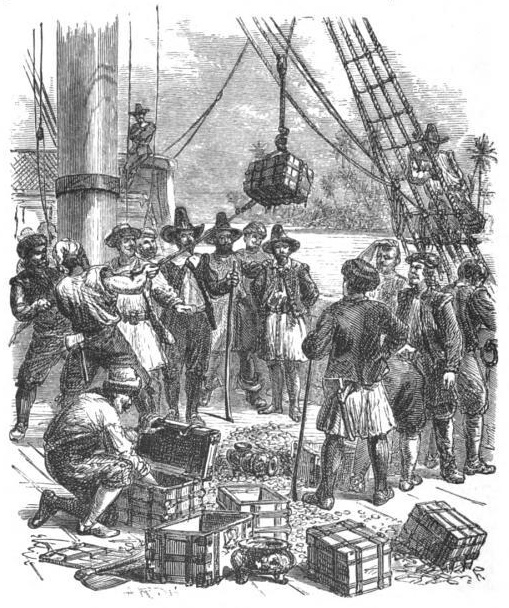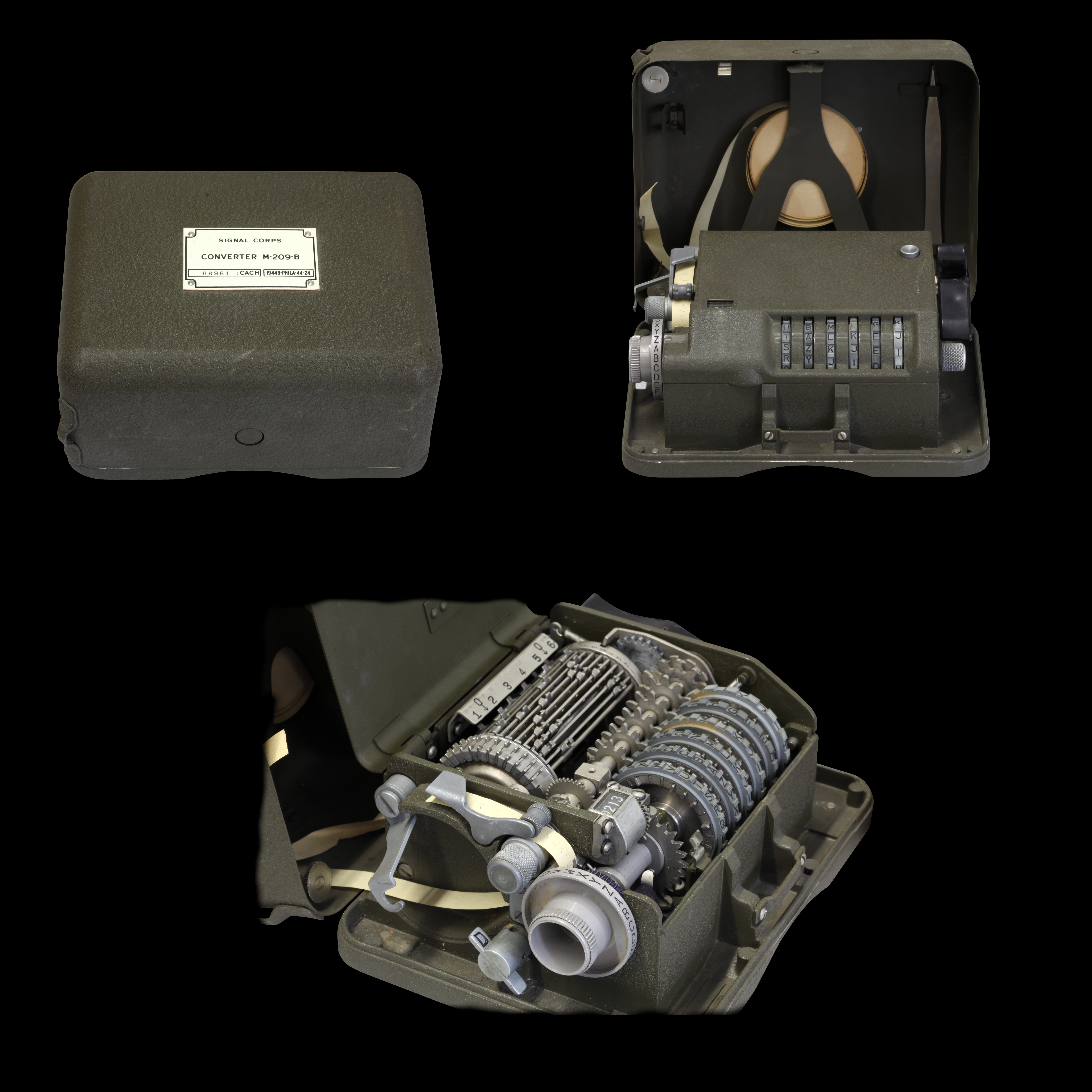|
Schlüsselgerät 41
The ''Schlüsselgerät'' 41 ("Cipher Machine 41"), also known as the SG-41 or Hitler mill, was a rotor machine, rotor cipher machine, first produced in 1941 in Nazi Germany, that was designed as a potential successor for the Enigma machine. It saw limited use by the ''Abwehr'' (military intelligence) towards the end of World War II. History The SG-41 was created under order of the ''Waffenamt, Heereswaffenamt'' (General der Nachrichtenaufklärung#Inspectorate 7/VI organisation, Inspectorate 7/VI organisation) as a collaboration between German cryptographer Fritz Menzer and Wanderer (company), Wanderer, a leading typewriter manufacturer. The machine also acquired the nickname "Hitler mill" because of the large crank attached to the side of the unit. Instead of using a lampboard like the Enigma, the SG-41 printed both the plaintext and ciphertext of the message onto two paper tapes. Due to wartime shortages of light metals such as aluminium and magnesium, the SG-41 weighed appro ... [...More Info...] [...Related Items...] OR: [Wikipedia] [Google] [Baidu] |
Magnesium
Magnesium is a chemical element with the symbol Mg and atomic number 12. It is a shiny gray metal having a low density, low melting point and high chemical reactivity. Like the other alkaline earth metals (group 2 of the periodic table) it occurs naturally only in combination with other elements and it almost always has an oxidation state of +2. It reacts readily with air to form a thin passivation coating of magnesium oxide that inhibits further corrosion of the metal. The free metal burns with a brilliant-white light. The metal is obtained mainly by electrolysis of magnesium salts obtained from brine. It is less dense than aluminium and is used primarily as a component in strong and lightweight alloys that contain aluminium. In the cosmos, magnesium is produced in large, aging stars by the sequential addition of three helium nuclei to a carbon nucleus. When such stars explode as supernovas, much of the magnesium is expelled into the interstellar medium where it ma ... [...More Info...] [...Related Items...] OR: [Wikipedia] [Google] [Baidu] |
Treasure Hunter
Treasure hunter is the physical search for treasure. For example, treasure hunters try to find sunken shipwrecks and retrieve artifacts with market value. This industry is generally fueled by the market for antiquities. The practice of treasure-hunting can be controversial, as locations such as sunken wrecks or cultural sites may be protected by national or international law concerned with property ownership, marine salvage, sovereign or state vessels, commercial diving regulations, protection of cultural heritage and trade controls. Treasure hunting can also refer to geocaching a sport in which participants use GPS units to find hidden caches of toys or trinkets, or various other treasure-hunting games. History In 1643, Massachusetts treasure hunter Sir William Phips salvaged a sunken Spanish treasure ship which had been wrecked on the Ambrosia Bank in 1599. The total worth of the treasures salvaged came in at £205,536. The ''Nuestra Señora de Atocha'' left Havana b ... [...More Info...] [...Related Items...] OR: [Wikipedia] [Google] [Baidu] |
Deutsches Museum
The Deutsches Museum (''German Museum'', officially (English: ''German Museum of Masterpieces of Science and Technology'')) in Munich, Germany, is the world's largest museum of science and technology, with about 28,000 exhibited objects from 50 fields of science and technology. It receives about 1.5 million visitors per year. The museum was founded on 28 June 1903, at a meeting of the Association of German Engineers (VDI) as an initiative of Oskar von Miller. It is the largest museum in Munich. For a period of time the museum was also used to host pop and rock concerts including The Who, Jimi Hendrix and Elton John. Museumsinsel The main site of the Deutsches Museum is a small island in the Isar river, which had been used for rafting wood since the Middle Ages. The island did not have any buildings before 1772 because it was regularly flooded prior to the building of the Sylvensteinspeicher. In 1772 the Isar barracks were built on the island and, after the flooding of ... [...More Info...] [...Related Items...] OR: [Wikipedia] [Google] [Baidu] |
Cryptanalysis
Cryptanalysis (from the Greek ''kryptós'', "hidden", and ''analýein'', "to analyze") refers to the process of analyzing information systems in order to understand hidden aspects of the systems. Cryptanalysis is used to breach cryptographic security systems and gain access to the contents of encrypted messages, even if the cryptographic key is unknown. In addition to mathematical analysis of cryptographic algorithms, cryptanalysis includes the study of side-channel attacks that do not target weaknesses in the cryptographic algorithms themselves, but instead exploit weaknesses in their implementation. Even though the goal has been the same, the methods and techniques of cryptanalysis have changed drastically through the history of cryptography, adapting to increasing cryptographic complexity, ranging from the pen-and-paper methods of the past, through machines like the British Bombes and Colossus computers at Bletchley Park in World War II, to the mathematically advanced comput ... [...More Info...] [...Related Items...] OR: [Wikipedia] [Google] [Baidu] |
Bletchley Park
Bletchley Park is an English country house and estate in Bletchley, Milton Keynes ( Buckinghamshire) that became the principal centre of Allied code-breaking during the Second World War. The mansion was constructed during the years following 1883 for the financier and politician Sir Herbert Leon in the Victorian Gothic, Tudor, and Dutch Baroque styles, on the site of older buildings of the same name. During World War II, the estate housed the Government Code and Cypher School (GC&CS), which regularly penetrated the secret communications of the Axis Powersmost importantly the German Enigma and Lorenz ciphers. The GC&CS team of codebreakers included Alan Turing, Gordon Welchman, Hugh Alexander, Bill Tutte, and Stuart Milner-Barry. The nature of the work at Bletchley remained secret until many years after the war. According to the official historian of British Intelligence, the "Ultra" intelligence produced at Bletchley shortened the war by two to four years, and without it th ... [...More Info...] [...Related Items...] OR: [Wikipedia] [Google] [Baidu] |
CX-52
The (Hagelin) C-52 and CX-52 were cipher machines manufactured by Crypto AG starting 1951/1952. These pin-and-lug type cipher machines were advanced successors of the C-38/M-209. The machine measures . The device is mechanical, but when combined with an electric keyboard attachment, the B-52, the resultant system is termed the BC-52. The B-52 is larger, measuring . The Hell 54 was a licensed copy of the C-52 by German company Hell. Structure and operation Both C and CX models are equipped with six pinwheels. In the C-52 version, these six wheels are chosen from a possible set of 12, with the number of pins on each wheel being 25, 26, 29, 31, 34, 37, 38, 41, 42, 43, 46, and 47. The C model had a fixed stepping system with a large wheel cycle due to the mutually prime factors in the pin counts. The CX-52 version has 6 pinwheels with 47 pins each and a flexible wheel movement system. The lug cage of both models contains 32 movable bars: 27 of the bars are used for encryption ... [...More Info...] [...Related Items...] OR: [Wikipedia] [Google] [Baidu] |
M-209
In cryptography, the M-209, designated CSP-1500 by the United States Navy (C-38 by the manufacturer) is a portable, mechanical cipher machine used by the US military primarily in World War II, though it remained in active use through the Korean War. The M-209 was designed by Swedish cryptographer Boris Hagelin in response to a request for such a portable cipher machine, and was an improvement of an earlier machine, the C-36. The M-209 is about the size of a lunchbox, in its final form measuring and weighing (plus for the case). It represented a brilliant achievement for pre-electronic technology. It was a rotor machine similar to a telecipher machine, such as the Lorenz cipher and the Geheimfernschreiber. Basic operation Basic operation of the M-209 is relatively straightforward. Six adjustable ''key wheels'' on top of the box each display a letter of the alphabet. These six wheels comprise the external key for the machine, providing an initial state, similar to an initial ... [...More Info...] [...Related Items...] OR: [Wikipedia] [Google] [Baidu] |
Boris Hagelin
Boris Caesar Wilhelm Hagelin (2 July 1892 – 7 September 1983) was a Swedish businessman and inventor of encryption machines. Biography Born of Swedish parents in Adshikent, Russian Empire, Hagelin attended Lundsberg boarding school and later studied mechanical engineering at the Royal Institute of Technology in Stockholm, graduating in 1914. He gained experience in engineering through work in Sweden and the United States. His father Karl Wilhelm Hagelin worked for Nobel in Baku, but the family returned to Sweden after the Russian revolution. Karl Wilhelm was an investor in Arvid Gerhard Damm's company Aktiebolaget Cryptograph, established to sell rotor machines built using Damm's 1919 patent. Boris Hagelin was placed in the firm to represent the family investment. In 1925, Hagelin took over the firm, later reorganising it as Aktiebolaget Cryptoteknik in 1932. His machines competed with Scherbius' Enigma machines, but sold rather better. At the beginning of World War I ... [...More Info...] [...Related Items...] OR: [Wikipedia] [Google] [Baidu] |
Six Cipher Wheels Of SG-41
6 is a number, numeral, and glyph. 6 or six may also refer to: * AD 6, the sixth year of the AD era * 6 BC, the sixth year before the AD era * The month of June Science * Carbon, the element with atomic number 6 * 6 Hebe, an asteroid People * Alphonse Six (1890–1914), Belgian football player * Didier Six (born 1954), former French international footballer * Franz Six (1909–1975), Nazi official * Frederick N. Six (born 1929), Justice of the Kansas Supreme Court * James Six (1731–1793), British scientist * Jan Six (1616-1700), an important cultural figure in the Dutch Golden Age * Robert Six (1907–1986), Chief Executive Officer of Continental Airlines between 1936 and 1981 * Regine Sixt, German businessperson * Valérie Six (born 1963), French politician * Perri 6 (an extremely rare surname), social scientist * Six family, family of regents of Amsterdam, founded by Jan Six Music * Six (band), an Irish pop band created by a TV reality show * ''Six'' (musical), a ... [...More Info...] [...Related Items...] OR: [Wikipedia] [Google] [Baidu] |
Fritz Thiele
Fritz Thiele (14 April 1894 – 4 September 1944) was a member of the German resistance who also served as the communications chief of the German Army during World War II. Thiele was born in Berlin and joined the Imperial Army in 1914. Working closely with Chief of army communications General der Nachrichtentruppe Erich Fellgiebel, he was part of the assassination attempt against Adolf Hitler on 20 July 1944. He was responsible as part of the coup attempt in the effort to sever communications between officers loyal to Hitler and armed forces units in the field and from the communications centre at the Bendlerstrasse in Berlin; he relayed a crucial message from Fellgiebel to General Friedrich Olbricht and the other conspirators that the assassination attempt had failed but the coup attempt should still proceed. There are differing accounts of the time when he provided this report. Thiele himself did not want to proceed with the coup attempt when he knew that the assassination a ... [...More Info...] [...Related Items...] OR: [Wikipedia] [Google] [Baidu] |






